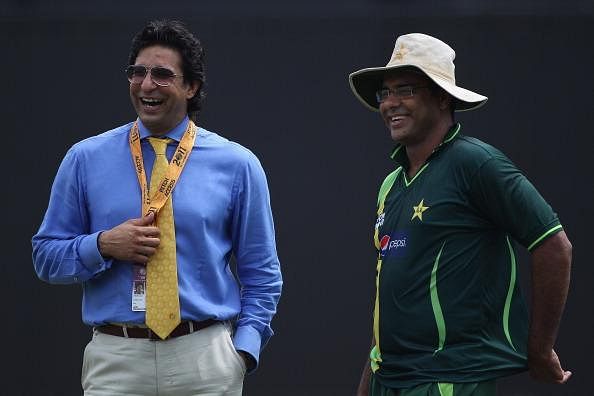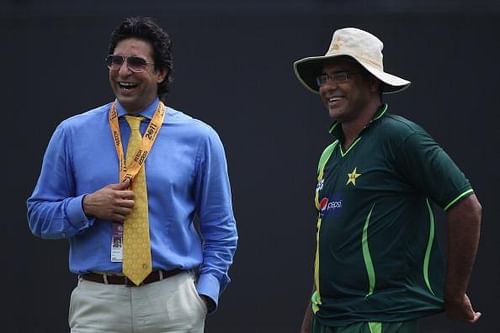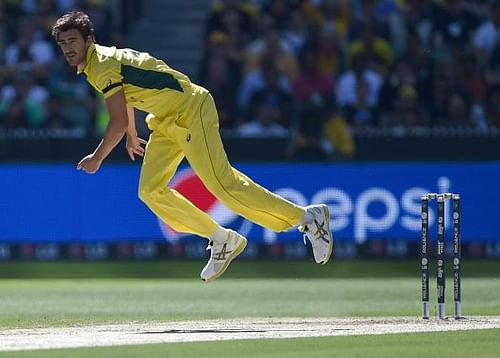
Unravelling the various facets of swing bowling

The recently concluded ICC Cricket World Cup saw the resurgence of those crashing sidewinders that tail back in from outside the off-stump and dislodge the top of the leg stump. In more conventional terms, it is called the art of swing bowling. Tim Southee of New Zealand and Mitchell Starc of Australia, with their palpable command over swing, made early inroads into the opposition batting giving their sides due advantage right at the start of an innings. Just like batsmen have a wide range of names for different shots in their repertoire, bowlers have come up with terms to define a ball’s deviation through the air; the game is well acquainted with conventional swing and reverse swing - the two most widely used variations.
Watching fast bowlers in action when they are in top form is one of the absolute delights of the sport. According to ex-Pakistan cricketer and legendary fast bowler Waqar Younis, fast bowling is all about imposing yourself on the batsman. And if you can swing the ball at that pace, you are bound to create problems even for the best of players. Ian Chappell, ex-Australian skipper and now a newspaper columnist quoting an old cricketing axiom, once remarked that if you can’t unearth a genuine fast bowler, the next best option is to find a good swing bowler. So, what is it that makes swing such a potent weapon in a bowler’s armour?
To try and understand the dynamics of swing bowling, we first need to look at the three key factors that determine the movement of the ball in the air or off the pitch.
(Note – All factors explained for a right-arm bowler bowling to a right-handed batsman)
Seam Position
If the bowler wants to bowl a conventional in-swinger, the seam needs to be pointing towards an imaginary leg slip with the shiny side to the left and the rough side to the right. The right arm after the delivery swing should ideally end inside the left leg.
Similarly, in case of a conventional out-swinger, the seam needs to be pointing towards the first slip with the shiny side to the right and the rough side to the left. The arms after delivery swing should ideally end outside the left leg.
For Reverse Swing
Reverse swing can only happen with an old ball. The seam position and everything else remains exactly the same but since the ball has gone through a lot of wear and tear, the rough side gets rougher and takes on the characteristics of the shiny side. Hence, the conventional in-swinger tends to leave the batsman and the conventional out-swinger comes into the batsman when the ball starts reversing.
Line and Length
Line and length are also key determinants of how effective an in-swinger or an out-swinger will be against a particular batsman. The ideal line and length for an in-swinging delivery would be starting from a couple of inches outside the off-stump, closer to the batsman, slightly on the fuller side. Because of the ball’s natural deviation, starting from middle and off stump or middle and leg stump would take the ball further down the leg side making life easier for the batsman.
As for an out-swinger, the ideal line could start from middle and off stump or maybe just inches outside off-stump and the length should be fuller.
The key is to make the batsman play and hence it is imperative to blend swing with the right line and length because otherwise, it is just waste of a legitimate delivery and the bowler’s efforts. And as for the aerodynamics, the shiny side travels faster through the air with the rough side acting as a brake pushing the ball in the direction the bowler wants it to go. In conventional swing, the shine of the ball gives a hint to the batsman of which way the ball will deviate in the air and, therefore, you will find bowlers hiding the shiny side with their hands in order to confuse the batsman.
Wrist position
Holding the seam vertically up will align your wrist right behind the ball. Cock the wrist back as you run in with the palm and the ball pointing towards the batsman. Just as the bowler is about the deliver the ball, there will be a natural flick of the wrists because of its cocked position. That flick at the last moment generates more swing - an advice that ex-Pakistan cricketer and an all-time great Wasim Akram gave to Starc.

There is a range of other variables like the nature of the wicket, weather conditions and even the bowler’s action that play a role in influencing the degree of swing that the bowler gets. Admittedly then, swing bowling is as much of science as it is a cricketing variety.
Swing and deception
The basic idea that drives swing bowlers is the idea of deception. As a bowler, you are inviting the batsman to drive through the air or down the ground while in reality, the batsman’s actually walking into a decoy. Having already committed to the shot, he can’t pull out but can only hope that he doesn’t nick one to the slips or there is a slack in the field that lets him get away. Therein lies the importance of swing bowling. It is a wicket-taking ploy, not a run controlling strategy. And it will be most effective if bowlers search for wickets while the ball is still swinging.
Swing and tactics
But with all these convoluted explanations trying to present a definitive answer to the mystery of swing bowling, Chappell wonders why try and reverse the old cherry when swing with the new ball could be just as damaging. Even the change of rules entails the use of dual new balls in ODIs, meaning that the fast bowlers will be stripped off their only effective weapon during the last overs of an innings – reverse swing. This also impacts decision- making on the field as we see certain captains bowling out one of their pace spearheads inside the first 15 overs because that is when the new ball is still swinging and creating doubts in the minds of the batsmen. MS Dhoni does that very often with Bhuvneshwar Kumar.
With Test cricket, it is a different ball game altogether. Captains are more reluctant to take the new ball even after it’s available as they search for reverse swing with the old cherry. It is no secret that batsmen find it more difficult to negotiate reverse swing because of its unpredictable alteration in trajectory. An art that primarily flourished in Pakistan, it is a bowler’s way of dealing with unresponsive wickets making them entirely self-sufficient. Most victims of reverse swing are either bowled or LBWs as batsmen are just not used to the ball tailing back in at such great pace.
Swing bowling is an irresistible force and with the right mixture of pace and direction, it can indeed be a force to reckon with. The art of swing is not dying; certainly not as we see the likes of young Bhuvneshwar exploit swing to extract purchase off the surface but its use is restricted to a select few and the cricketing world will do good to spread this art form to its other disciples.